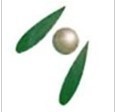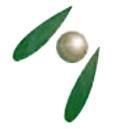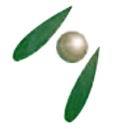
Product Description
Name: Squalene
Synonyms; 2,6,10,15,19,23-Hexamethyl-2,6,10,14,18,22-tetracosahexaene
Molecular Formula: C30H50
Molecular Weight: 410.72
CAS Number: 7683-64-9
Squalene is a natural organic compound originally obtained for commercial purposes primarily from shark liver oil, though there are botanic sources as well, including amaranth seed, rice bran, wheat germ, and olives. All higher organisms produce squalene, including humans. Squalene is a hydrocarbon and a triterpene. Squalane is a saturated form of squalene in which the double bonds have been eliminated by hydrogenation. Because it is less susceptible to oxidation, it is more commonly used in personal care products than squalene.
Squalene is the biochemical precursor to the whole family of steroids. Oxidation (via squalene monooxygenase) of one of the terminal double bonds of squalene yields 2,3-squalene oxide, which undergoes enzyme-catalyzed cyclization to afford lanosterol, which is then elaborated into cholesterol and other steroids. Squalene is a low density compound often stored in the bodies of cartilaginous fishes such as sharks, which lack a swim bladder and must therefore reduce their body density with fats and oils. Squalene, which is stored mainly in the shark's liver, is lighter than water with a specific gravity of 0.855. Environmental and other concerns over shark hunting have motivated its extraction from vegetable sources instead.
Recently Squalene has become a trend for sharks to be hunted to process their livers for the purpose of making squalene health capsules. However, there is little clinical evidence to prove that, taken internally, squalene does anything to increase an individual's quality of life.
Other Products in 'Dietary & Nutritional Supplements' category
 |
A & Z Group Co.,Ltd
All Rights Reserved.(Terms of Use) Developed and Managed by Infocom Network Private Limited. |
 English
English Spanish
Spanish French
French German
German Italian
Italian Chinese (Simplified)
Chinese (Simplified) Japanese
Japanese Korean
Korean Arabic
Arabic Portuguese
Portuguese





 Send Inquiry
Send Inquiry